Rainbow Sharks are fun and colorful fish to have at home, but there are several things to consider when keeping them with other fish.
Though not actual sharks, they get their name from the shark-like dorsal fin they have on top. Rainbow Sharks are originally Southeast Asian freshwater fish belonging to the Cyprinidae family and aren’t very aggressive in the wild. But they can be territorial while in captivity.
So, it’s essential to exercise caution before introducing tank mates for the Rainbow Shark. In this guide, we’re going to give you the complete low-down on the best Rainbow Shark tank mates.
Let’s dive in.
Can A Rainbow Shark Live Alone Without Tank Mates?
Behavior-wise, Rainbows can get somewhat territorial in close quarters, and this leads to them becoming aggressive. They are usually timid when young, but the aggressive side tends to become pronounced as they mature in proximity with other fish.
In general, you’d need a larger tank (at least 75 gallons) to house a Rainbow Shark. Since they are territorial in nature, they don’t mind living alone without tank mates. If you’re thinking of introducing some mates, then make sure your tank has a lot of caves and hiding spots.
Rainbow Sharks are usually bottom dwellers, which means they can live in peace with top-dweller species. However, they don’t get along well with others of their kind and can exhibit hostile behavior such as biting, head-butting, and chasing.
Overall, we’d say a Rainbow Shark can live alone without mates very well. If you are thinking of introducing other fish in the same tank, make sure they are compatible with your Rainbow Shark. Otherwise, you’ll be facing severe trouble as it will attack other smaller fish.
How To Choose The Best Tank Mates For Rainbow Shark
Rainbow Sharks begin to show signs of aggression as they grow older. This is the time when you need to look out for them becoming hostile towards other fish in the tank. So, you’ll have to choose the tank mates rather carefully to ensure a peaceful aquarium environment.
Here’s a list of some of the considerations you need to keep in mind when selecting tank mates for Rainbows Sharks.
Fast Moving Fish
Fast-moving fish such as Harlequin Rasboras or Cherry Barbs are a good fit as tank mates for Rainbow Sharks. These fish can get away from Rainbow Shark territory faster and avoid any attacks coming their way. Faster fish can also compete well with Rainbow Sharks for food.
Don’t Have Long Fins.
When introducing mates into a Rainbow Shark tank, make sure they don’t have long fins. Since Rainbow Sharks themselves have a long dorsal fin, other fish with longer fins might obstruct their path, prompting violence from the Rainbow Shark.
Not The Same Or Similar Species
We recommend you don’t keep more than one Rainbow Shark in the same tank. These fish can be extremely aggressive towards the same species, or even other fish such as Red Tail Sharks, which look similar to them. We’ve observed Rainbow Sharks getting hostile with other freshwater shark species.
The 5 Best Tank Mates For A Rainbow Shark In A 100g+ Long Tank
Here’s a list of the top five tank mates for a Rainbow Shark.
Cherry Barb
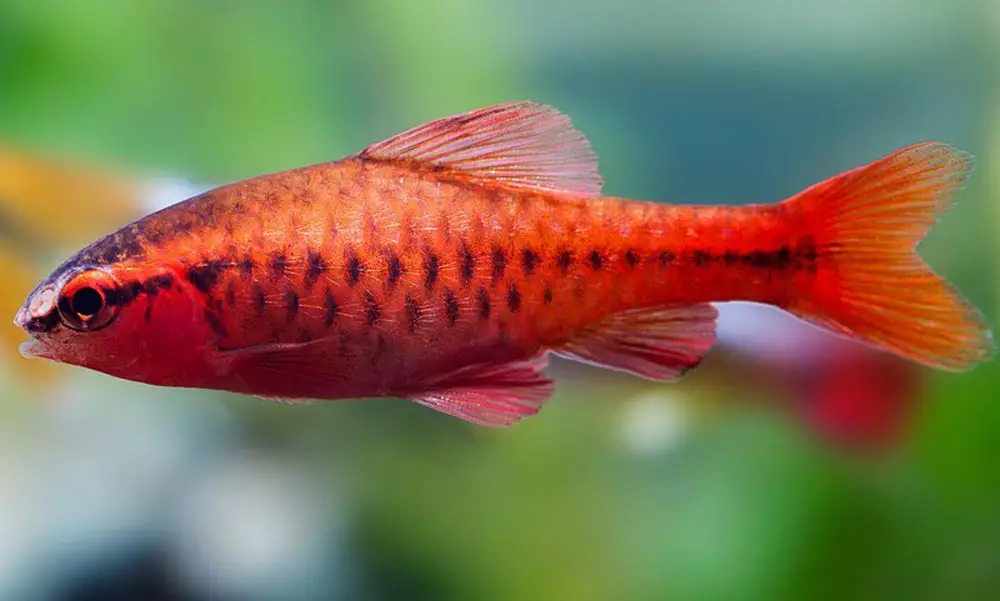
Cherry Barbs are an excellent choice as tank mates for Rainbow Sharks. These are peaceful freshwater fish that thrive in the tropical waters around Sri Lanka. They have an average lifespan of between 5 to 7 years and reach about 2 inches in length when they’ve fully grown.
These are active fish that live in schools, so you’ll have to introduce 4 or 5 of them in the tank. They are peaceful in nature, making them an ideal choice as tank mates for larger bottom feeders such as the Rainbow Shark. They are also fast swimmers, which is another reason they can survive in a tank with Rainbow Sharks.
Finally, the Barbs don’t like the bottom of the tank and prefer to stay towards the central region. This ensures that they won’t encroach upon the Rainbow Sharks’ territory in any way, causing it to feel threatened.
| Scientific Name: | Puntius titteya |
| Family: | Cyprinidae |
| Origin: | Sri Lanka |
| Care Level: | Easy |
| Color Form: | Black, Red, White |
| Size: | 2″ |
| Temperature: | 74-79° F |
| PH: | 6.0-7.0 |
| Diet: | Omnivore |
| Minimum Tank Size: | 25 gallons |
| Temperament: | Peaceful |
Harlequin Rasbora

Harlequin Rasboras are another schooling fish that can be good tank mates for Rainbow Sharks. Rasboras are peaceful fish that live best in groups of 4 or 6; since they like to stay near the middle of the tank, it’s highly unlikely that a Rainbow Shark will see them as a threat.
Since Harlequin Rasboras grow to be at most around 2 inches, they are small enough not to bother the Rainbow Shark. At the same time, they can’t be easily gobbled up by it either. Further, the aquarium conditions preferred by Rasboras are also similar to those for Rainbow Sharks.
| Scientific Name: | Rasbora heteromorpha |
| Family: | Cyprinidae |
| Origin: | Asia |
| Care Level: | Easy |
| Color Form: | Orange |
| Size: | 2″ |
| Temperature: | 72-77° F |
| PH: | 6.0-6.5 |
| Diet: | Omnivore |
| Minimum Tank Size: | 10 gallons |
| Temperament: | Peaceful |
Clown Loach
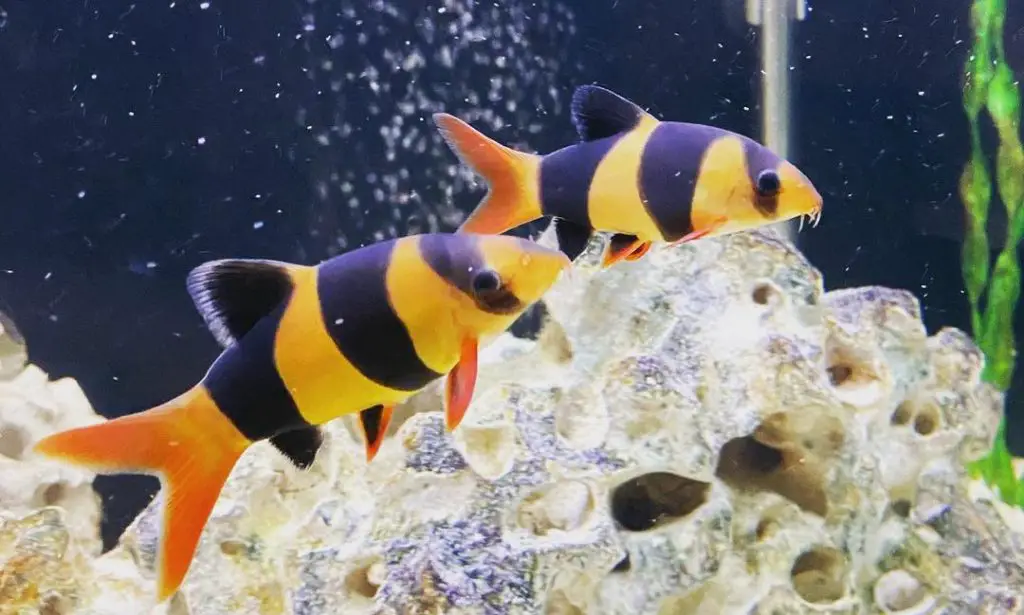
Clown Loaches are middle to bottom dwellers, so theoretically, you shouldn’t put them in the same tank as a Rainbow Shark. However, we’ve observed that Rainbow Sharks do get along well with Clown Loaches, maybe because they live in close proximity in the wild.
The trick to getting Clown Loaches to live peacefully with Rainbow Sharks is to provide a lot of hiding spots for both species. Also, Clown Loaches fall in the optimal size range, so they’re neither too big to obstruct, nor can they be easily eaten by a Rainbow Shark.
However, a word of advice: different Rainbow Sharks have different temperaments, and some might not get along well with Clown Loaches and feel threatened. In that case, you’d need to move them to separate tanks immediately.
| Scientific Name: | Chromobotia macracantha |
| Family: | Cobitidae |
| Origin: | Indonesia |
| Care Level: | Moderate |
| Color Form: | Black, Orange, Red, Tan |
| Size: | 1″ |
| Temperature: | 72-86° F |
| PH: | 6.0-7.5 |
| Diet: | Omnivore |
| Minimum Tank Size: | 100 gallons |
| Temperament: | Semi-aggressive |
Zebra Danio
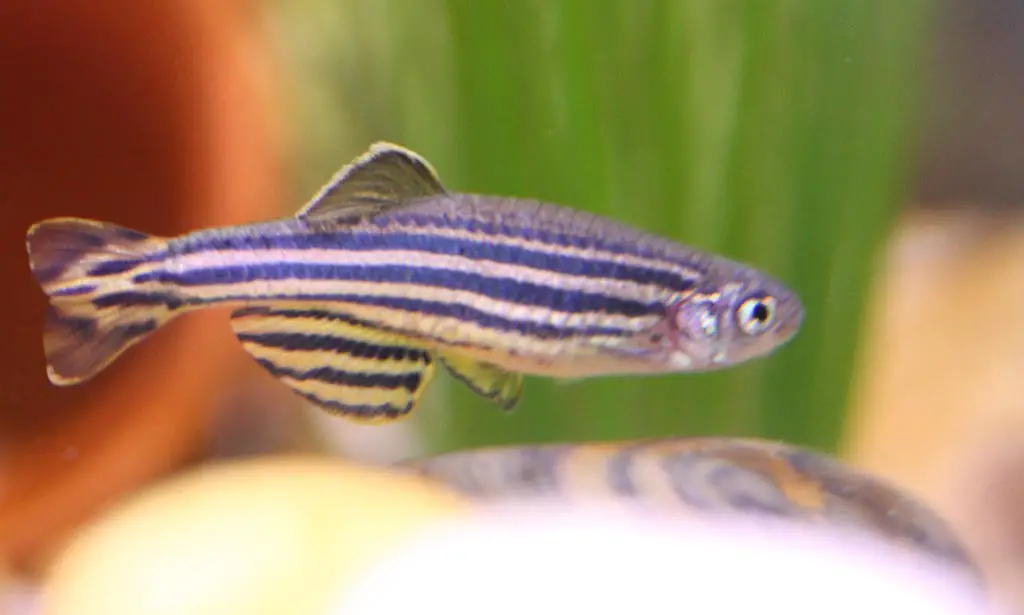
Zebra Danios are beautiful fish that have stripes similar to the animal they are named after. Also called Striped Danios or Zebrafish, they are usually found in South Asian waters. And since they are typically found at the top or middle of the tank, they are perfect as tank mates for a Rainbow Shark.
Small and naturally peaceful, Zebra Danios live in shoals. Also, they are relatively fast swimmers, which means they can get away from the Rainbow Shark before it can attack them.
What’s more, their tank requirements and food habits are similar to Rainbow Sharks. And they grow to almost 3 inches, which is large enough for the Rainbow Shark to give them a miss as food.
| Scientific Name: | Danio rerio |
| Family: | Cyprinidae |
| Origin: | Farm Raised – USA |
| Care Level: | Easy |
| Color Form: | Blue, Purple, White, Yellow |
| Size: | 3″ |
| Temperature: | 64-75° F |
| PH: | 6.5-7.5 |
| Diet: | Omnivore |
| Minimum Tank Size: | 10 gallons |
| Temperament: | Peaceful |
Bristlenose Pleco

The primary reason a Bristlenose Pleco makes for good tank mates with Rainbow Sharks is their larger size. This means, although they are usually bottom dwellers, the Rainbow Shark is unlikely to pick a fight with it due to its massive size of almost 2 feet.
Further, Plecos are an extremely tranquil variety of fish and aren’t likely to fight with your Rainbow Shark. Keep in mind that these choices will only work well if you have a wide enough tank of at least 100 gallons.
| Scientific Name: | Ancistrus sp |
| Family: | Loricariidae |
| Origin: | South America |
| Care Level: | Easy |
| Color Form: | Orange, Tan, White |
| Size: | 5″ |
| Temperature: | 74-79° F |
| PH: | 6.5-7.4 |
| Diet: | Omnivore |
| Minimum Tank Size: | 30 gallons |
| Temperament: | Peaceful |
The 5 Worst Rainbow Shark Tank Mates To Avoid
Guppies
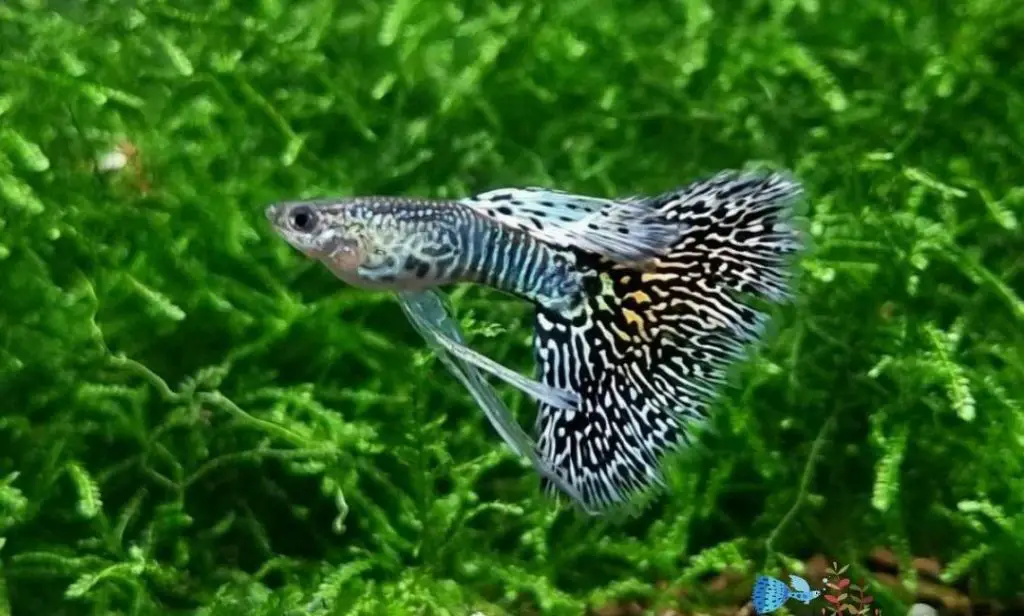
Guppies are one of the most popular aquarium fish species and are great for beginner aquarists. They are very hardy fish and can be prolific breeders when provided with the right conditions.
However, they make for one of the worst tank mates for Rainbow Sharks. Rainbow Sharks are larger than Guppies and also much more aggressive. As a result, they can bully the Guppies if they’re put in the same tank.
Further, Guppies are livebearers, which means that the fry are already swimming freely at birth. This can become a severe problem as the Rainbow Sharks will most likely end up eating the fry.
Gouramis
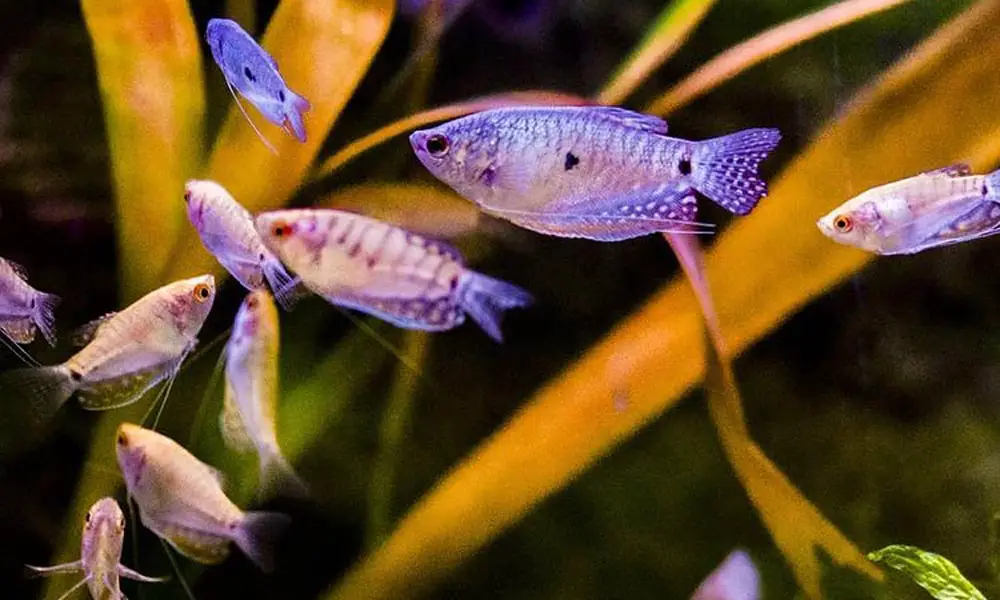
Gouramis are slow-moving tropical freshwater fish that are found in the South Asian waters. They are an egg-laying species and are air breathers. So, you can usually find them towards the top of the tank.
Despite being top dwellers, Gouramis are not suitable fish for keeping with Rainbow Sharks for several reasons. For one, Gouramis (especially males) tend to be aggressive and territorial and can get into fights with the Rainbow Sharks.
Several species of Gouramis, such as the Giant Gourami, can get very large and may be unsuitable for keeping with Rainbow Sharks. Again, other Gourami species are too small to be kept with Rainbow Sharks as they might get eaten.
Also, since Gouramis are slow swimmers by nature, they won’t be able to compete with the Rainbow Sharks for food.
Corys
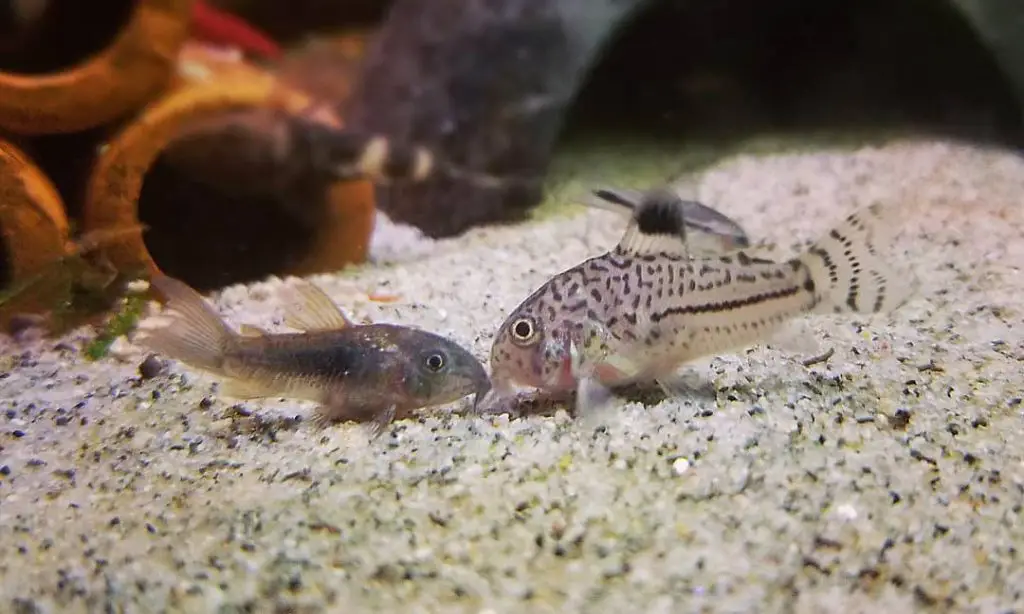
Corys are usually great for freshwater community tanks, but you can’t keep them with a Rainbow Shark. Corys are a calm and peaceful species and can’t compete with the semi-aggressive Rainbow Sharks.
Another reason for not keeping Corys and Rainbow Sharks together is that Corys are also bottom dwellers. This means the Rainbow Shark(s) will see them as encroachers on their territory and are most likely to attack.
African Cichlids
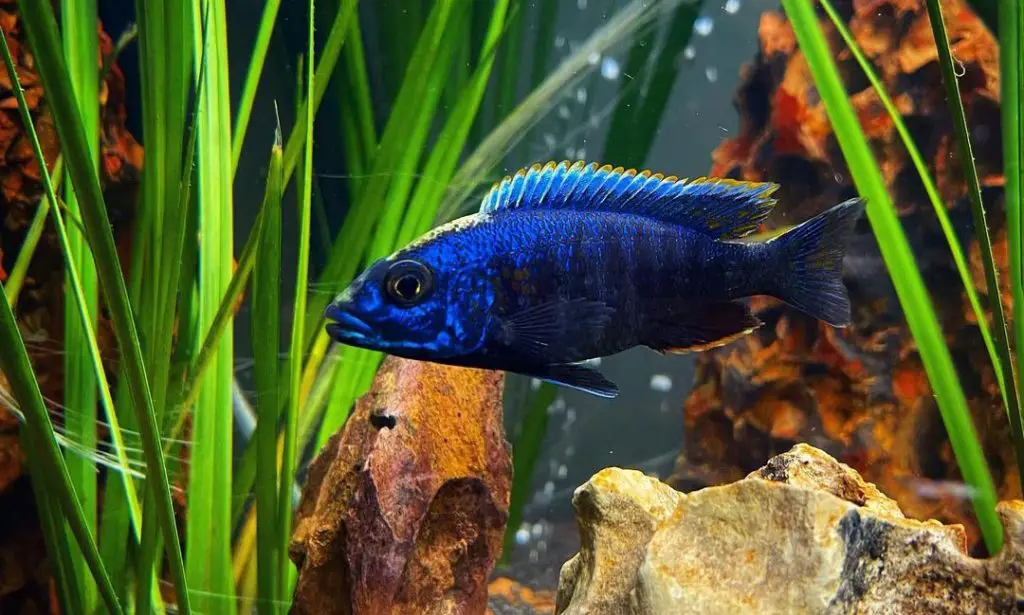
The African Cichlid comes in several species, each with its own distinct coloration and patterns. These are aggressive fish that grow up to 8 inches in size and can live up to 15 years, depending on the species and living conditions.
Since African Cichlids are similar in size and aggression to Rainbow Sharks, there’s a good chance that they will get into fights with each other. Further, as they are bottom dwellers and territorial, African Cichlids don’t go well with Rainbow Sharks.
Yet another reason for not keeping Rainbow Sharks with African Cichlids is the water condition. While Rainbow Sharks prefer a pH level of 6.5 to 7.5, Cichlids prefer pH levels of 7.5 and above.
There’s also a temperature difference; Rainbow Sharks prefer waters between 72 and 82 degrees Fahrenheit. African Cichlids like warmer temperatures in the range of 75 to 85 degrees Fahrenheit. As a result, you might find it difficult to hit upon the ideal water parameters when keeping these fish together. Read more
Most Of Freshwater Sharks
In general, we recommend you keep only one Rainbow Shark in a tank at a time. Rainbow Sharks don’t take well to other freshwater sharks that look and behave similarly to them. We’ve even seen them become aggressive towards Albino Sharks.
Since Rainbow Sharks live a solitary and territorial life in the wild, the same behavior is reflected in captivity. As a result, they can’t tolerate other Freshwater Sharks such as the Red Tail Shark or even Bala Sharks.
If you’re keeping any of these fish with a Rainbow Shark, be very careful and look out for bite marks or nipped fins. They can get extremely aggressive with each other.
Tips To Introduce Rainbow Shark Tank Mates
Introducing tank mates for Rainbow Sharks can be tricky, especially if your tank size is limited. Rainbow Sharks can be unpredictable, and temperaments vary from fish to fish. Still, here are a few general tips to keep in mind when introducing Rainbow Shark tank mates:
- Always choose tank mates that are middle or surface dwellers
- Never keep other freshwater shark species with Rainbow Sharks, especially the same species
- Select fast-moving fish as tank mates that can quickly get away from the Rainbow Shark
- Make sure the species have similar water parameter requirements
- Be certain that the species is large enough so that the Rainbow Shark can’t eat them
FAQs:
Can rainbow sharks live with tetras?
Rainbow sharks can live with tetras in a big community tank, especially these tougher types of tetras, such as Serpae tetras, black skirt tetras, etc. DThe weaker tetras including rummy nose, neons and cardinals can easily be eaten by just about anything.
Will a rainbow shark eat other fish?
The rainbow shark is an semi-aggressive species that will pick a territory. such as a cave or anywhere it can hide and defend them from intruders. They are extremely savage with conspecifics and similar shaped fish like other sharks and and algae eaters.
Can 2 rainbow sharks live together?
No, never keep just two rainbow sharks in the same tank. Rainbow sharks can get aggressive with conspecifics. Either keep a group of them (5 or more) from fry or one rainbow shark in a single tank.
Conclusion
We hope you now have a better idea of the requirements you need to keep in mind when introducing tank mates for Rainbow Sharks.
As we’ve already mentioned once above, choosing tank mates for Rainbow Sharks can be rather a tricky task. They are temperamental fish that are known to bully other tank mates. In extreme cases, they can even go in for direct attacks.
However, if you can keep the suggestions and recommendations mentioned in this guide, we’re sure you’ll be able to find suitable mates for a Rainbow Shark. Just keep a close watch on the community for a while, and observe how the Rainbow Shark reacts.
Till then, enjoy your aquarium!

Hi I am just starting out again I kept fish 50 years ago, my tank is nearly ready to introduce fish I love Angle fish what do you suggest I put with them I want to put about 4/5 Angles in my tank which is 87 ltrs I do like the look of a blue red finned shark and some algae eating fish would they be compatible? I hope you can advise.
many thanks.
Bill